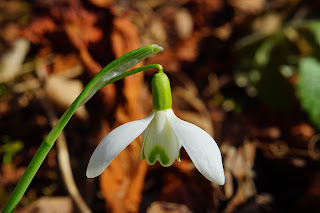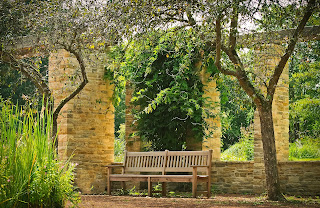 |
| Looking More Professional Makes Getting Published Easier |
Getting published one
day may be your future dream. Or, you may have already finished a manuscript
and are submitting a book to a publisher right now.
However, if you just are
learning how to get a book published for the first time, you may be a little
anxious about how publishers will judge your manuscript.
Because what you may
have found is that the list of requirements for publishing a book is a long
one.
And submitting a book to
a publishers seems impossible.
Then, with so many
self-publishing options available, the steps to getting a book published may
seem confusing.
And while you may have
found a few people who will help you proofread, no one is interested in helping
you find a publisher for your first book. And there isn't much helpful advice
about submitting a book to a publisher online.
Which leaves you
learning how to publish your first book on your own. And this may have prompted
you to look at first time authors who made it big - to copy what they did. In
order to get book publishing companies to notice you.
Or to find a literary
agent who knows about submitting a book to a publisher.
But this didn't work. So
you may have tried approaching publishing houses for new authors with your own
brand of query letters. You may have even tried vanity presses for
self-publishing. And a last resort, you may have tried to take advice on
publishing a novel (or self-help book) from an indie authors' group online.
No help with getting published there.
So what do you do? It's
a bit of a waiting game now.
But as a first-time
author, you may have missed one of the most important steps to submitting a
book to a publisher there is:
Because as a first-time author, you have to look like you are already published.
But instead of doing that - your cover art, your book description, your formatted manuscript, and your research are all still saying, "How do I get published?"
And you, as an unknown
author, may have written something really brilliant. But no book publishers
will take you seriously until you look like a professional writer.
Simply because the
execution of your book is too amateurish-looking.
So before you jump ahead
and start looking for a list of book publishers for first time authors, you
need to make absolutely sure your book looks like it has already been
published. The process of looking for a publisher will be much more productive
if you do. And at this time in your writing career, submitting a book to a
publisher is crucial.
But you can appeal to book publishers much faster when you follow a few simple rules:
Getting Published With The Right Cover Art.
Your book cover has to
be right and it has to be professional-looking. And it doesn't matter whether
you are submitting a book to a publisher or publishing your book yourself. To
have a book that looks finished, you will still have to "visualize the
cover."
Because even if you are
working with the best publishers for first-time authors, they should be able to
easily execute an impactful cover, based on your finished manuscript.
If you are
self-publishing, the same applies. Nevertheless, don't pay an artist to create
your book cover from scratch. This is because the artist that you will be able
to hire will only be able to create cover art which makes your book look
substandard. Even though it isn’t.
To learn more about cover art for books go to: http://writeyourselfrich.net/online-bookstore-make-cover-pop/
To learn more about cover art for books go to: http://writeyourselfrich.net/online-bookstore-make-cover-pop/
And in reality, the right photograph
with the right font is always best when it comes to cover art. Whether
submitting a book to a publisher or self-publishing.
For example, think about
the daily tweets you see, like when someone sends out famous quotes. What does
the artwork consist of? An impactful photograph and an eye-pleasing font. So
for your cover art, find an expressive photo, and pair it with the lettering
that makes it stand out. This will not only create a professional quality cover
but will also give you the credibility you are looking for.
Clearly, you wouldn't
need to have a professional cover made if you are going to find a publisher for
your first book.
But how do you know?
A nice cover becomes the
total sum of your manuscript. And even literary agents for first time authors
would like to see an entire presentation like this. And a lack of cover art ideas is just one more reason for book publishing companies to say
no.
Getting Published With The Right Format.
The formatting of your
book must adhere to all of the professional standards of the publishing
industry. If you want to be taken seriously. And there are a
lot of standards. And it doesn't matter whether you learn how to self-publish
for free or figure out how to submit a manuscript to a publishing company.
This is why you may find
it helpful to put your first book aside. (It's not going anywhere.) And
instead, work on publishing an ebook that may be similar. Learning how to
publish a book on Amazon first will be something pro-active you can do while
you do further work on submitting a book to a publisher. Other companies that
publish ebooks are iTunes and Barnes & Noble.
And their software
automatically puts your manuscript into a professional format. There is still
some work for you to do. But when you try to format a paperback or hardback
book on your own, you will add to your frustrations. And much less costly than
paying someone else do it.
And this is not a book
to sell, but rather a book to learn how to publish you own book for free. Think
of your ebook as that first pancake. It doesn’t quite come out right the first
time. But you want to make these kinds of mistakes before you start looking for
a publisher.
Getting Published By Being Accurate.
Everyone wants to read
your opinion or slant on a topic. That’s why they buy your book. But readers
love to pick apart the inaccuracies in novels, and they simply won't buy a
self-help book that isn't in the least factual.
So the biggest part of
learning how to write a book and then submitting a book to a publisher is
learning how to do research. If you write a self-help book, you have to have
some facts to back it up. And those facts have to come from reliable sources: e.g.
university studies, research scientists, or legitimate reference books.
Book publishers will forgive almost any typo, but they will not ignore erroneous facts. Or, the lack of any facts that back up what you are saying. The library is a good place to start. And you can download many research books from the library and read them on your computer at home.
And when it comes to
research, publishing fiction is no different. If you are publishing a novel
that is based in any kind of reality, you will need to know about all of the
physical characteristics concerning the setting of your book. And if your
setting details are a little sketchy, book publishing companies will reject
your book. They aren't going to do your research for you simply because they
feel they have discovered some kind of brilliant new work of fiction for
publishing.
Getting Published By Finishing Your Manuscript.
Completely finish
writing your book first. This includes having an impactful cover-art concept,
correct formatting, and completed research. As well as enough words to have a
completed manuscript. Because the biggest complaint about first-time writers
from book publishers and literary agents is that the writer is looking for the
publisher to "fill-in" the small details. To make the manuscript
readable.
In other words,
first-time writers, when submitting a book to publishers, shouldn't confuse
creative writing with a completed manuscript. Because a book editor will not
finish your book for you.
So before you start
looking for the best publishers for first-time authors, make sure your book
concept and manuscript are finished first. Submitting a book to a publisher is
much more likely to result in having a bestseller if you do.
See also: http://writeyourselfrich.net/
See also: http://writeyourselfrich.net/





